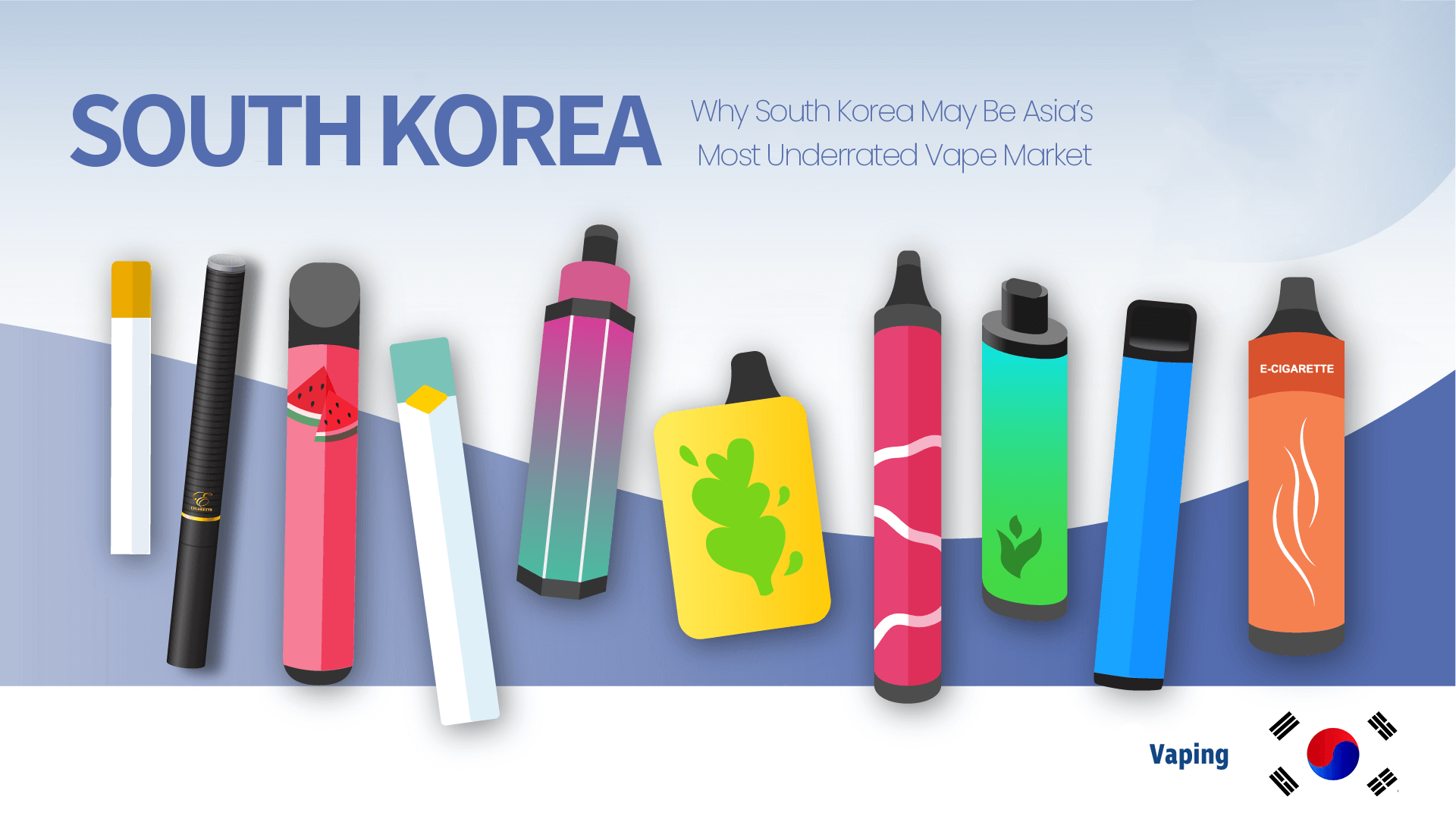
While attention in the global vape industry often gravitates toward the U.S., Europe, and emerging markets like Southeast Asia, South Korea has quietly grown into one of China’s top three e-cigarette export destinations—trailing only the United Kingdom and the United States. In 2024, China’s vape exports to Korea reached $716 million, up 1.57% year-over-year. But numbers alone don’t tell the full story.
South Korea’s strategic geographic location, robust logistics infrastructure, and unique consumer profile make it not only a high-potential vape market, but also a regional hub for distribution into the Middle East, Southeast Asia, and beyond.
A Consumer Culture Driven by Trend and Tech
With a population of around 50 million, South Korea is a remarkably trend-sensitive market, where technology, fashion, and lifestyle converge. Urban consumers—particularly young adults, working professionals, and female users—are highly receptive to new and stylish products. In fact, 60% of Korean e-cigarette users are between the ages of 20 and 39, a demographic drawn to vaping’s personalization, sleek aesthetics, and social cachet.
Walking through Seoul’s high-traffic commercial districts like Myeongdong, it’s common to see vape shops nestled among beauty chains and streetwear stores. Some of these shops even operate autonomously: unmanned vape stores in Seoul quadrupled in number within six months, from 11 in April to 44 by October 2024.
Industry estimates suggest there are already over 4,000 vape retail outlets across the country—a striking figure for a nation roughly the size of China’s Zhejiang Province.
Channel Strategy: Opportunities and Obstacles
For international vape brands, the retail landscape in South Korea presents both promise and limitations. Major convenience store chains—powerful sales channels—are largely controlled by global tobacco giants. Competing in these spaces often requires not only regulatory compliance but also substantial financial resources for taxes, promotions, and shelf placement.
This has pushed smaller and mid-sized vape brands toward alternative distribution models, such as franchised retail outlets. Brands like Haka, reportedly manufactured by Smoore, have successfully adopted this approach, growing a nationwide retail footprint with over 300 stores. The model echoes early strategies used by brands in China: control the channel, build the brand, and focus on in-store conversion.
Co-branding with local lifestyle labels is also gaining traction, helping vape brands integrate into Korea’s mainstream consumer culture while avoiding direct confrontation with regulatory chokepoints.
South Korea as a Strategic Gateway
South Korea’s location and infrastructure provide clear logistical advantages for regional trade:
• Incheon International Airport ranks among the world’s busiest for cargo, serving as a critical node for cross-border transport.
• Busan Port, the world’s seventh-largest container port, facilitates fast and efficient goods transit across Asia-Pacific.
For manufacturers and brands alike, Korea is more than a standalone market—it’s a gateway for routing goods into harder-to-reach destinations like Japan, the Middle East, or parts of Southeast Asia.
Policy Vacuum, Tax Loopholes, and Political Instability
Despite its market size and consumer readiness, South Korea’s e-cigarette industry operates in a state of regulatory limbo. The country has yet to formally pass a law defining how e-cigarettes—especially those using synthetic nicotine—should be taxed and regulated.
This has created a loophole where 90% of e-cigarette products on the Korean market use synthetic nicotine to avoid taxation under the traditional Tobacco Business Act, which currently applies only to tobacco-derived nicotine.
Recent government data highlights the impact:
• In Q3 2024, e-cigarette sales surged by 24.6% year-over-year.
• Sales of heated tobacco products grew just 2%.
• Traditional cigarette sales fell by 3.4%.
Synthetic nicotine imports, meanwhile, jumped 80% between 2022 and 2023, indicating the market’s reliance on regulatory ambiguity.
The government has proposed a revised tax plan that would include synthetic nicotine, potentially generating over 100 billion KRW ($73 million USD) in additional annual revenue. However, political friction has delayed progress. Legislative attempts to amend the Tobacco Business Act have repeatedly stalled in committee due to partisan disagreements.
Adding further uncertainty is the country’s political landscape. South Korea originally planned its next presidential election for 2027, but recent political turbulence—including the December 2024 parliamentary vote to impeach President Yoon Suk-yeol—may result in elections being held as early as 2025. Until the political dust settles, comprehensive vape regulation may remain on hold.
A Market at a Crossroads
Despite its regulatory haze, South Korea remains one of the most promising and dynamic vape markets in Asia. Its young, tech-savvy consumers, dense retail network, and role in regional supply chains all point to significant long-term upside.
But growth here won’t come easily. Brands looking to enter or expand in South Korea must weigh the following:
• How to navigate uncertain taxation on synthetic nicotine
• Whether to build independent retail infrastructure or seek local partnerships
• How to differentiate from big tobacco incumbents in a crowded market
• When (and how) to adapt to a future regulatory overhaul that seems inevitable
In short, South Korea is not a waiting game—it’s a strategy game. For vape brands willing to invest in agility, compliance, and cultural adaptation, the payoff could be substantial.
